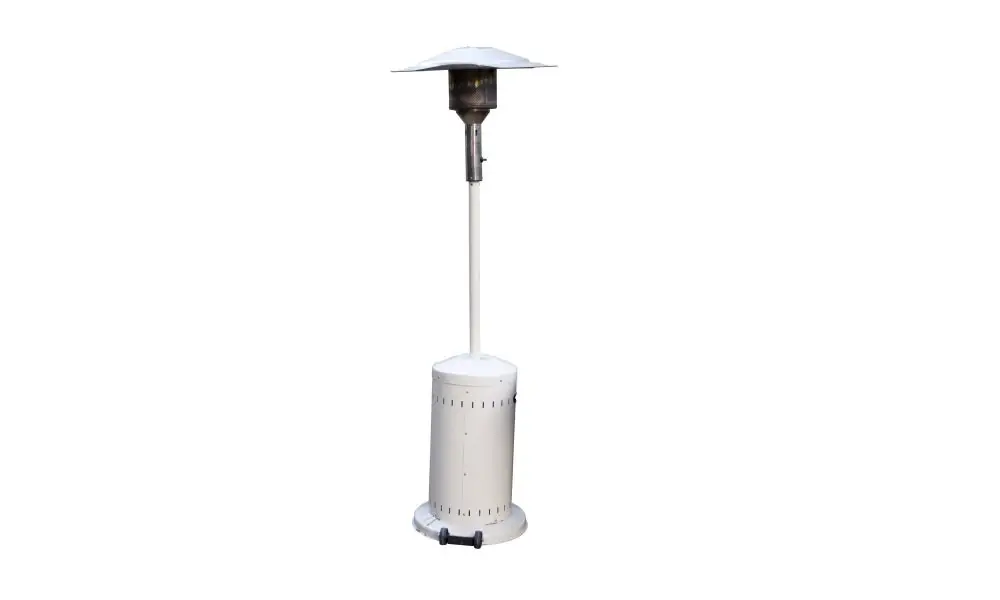Ceramic heaters, gas, and kerosene are some of the few alternatives that may be used in place of infrared heaters. All of them may be compared and contrasted in terms of the similarities and differences that they exhibit.

The infrared heaters emit rays which are then absorbed by other items, increasing the temperature of the surrounding items. They have a different way of working from other types of heaters one might be considering for domestic heating applications.
Quick Navigation
The most unique feature of the infrared space heaters is that they don’t use convection and just blow air. The heater emits radiant energy in the form of waves and the heat from radiation is independent of the room air. For officeholders who consistently sit in one spot, this is the way to go.
1. Infrared Heaters vs Ceramic Heaters
A ceramic heater is a heating element that generates its heat through the Positive Temperature Coefficient ceramic majorly known as the PTC. The PTC ceramic is a semi-conductor and when a particular quantity of voltage is applied through it, the temperature varies.
This implies that the temperature is a self-regulating variable and depends greatly on the voltage applied. As temperature regulates, the ceramic elements heat up the aluminum fins since they are in contact. A fan blowing through the fins heats the air.
From the above brief description, it is worth noting that the ceramic heaters and the infrared ones exhibit a few differences and at the same time, a few similarities. These two heating options both function in the principle of generating heat from electrical energy.
The ceramic heaters are in direct opposition to the infrared heaters, the unit targets the entire surrounding room, and therefore if you’re often moving positions or in a larger room with more than one person, ceramic heating is a better option to keep the room warm for you.
The general similarities between the ceramic and infrared heaters are:
- Both are portable and easily movable.
- Both use the principle of converting electrical energy to heat energy.
- Both are used for heating and warmth purposes in homes, offices, and meeting places because of their extreme warming effects.
However, in as much as the similarities exist, there are notable distinguishable differences between the infrared and the ceramic heaters. The primary difference between the two is the process in which they heat their surroundings. See how infrared heaters work.
While the ceramic heaters heat the surrounding air and circulate it in the room, the infrared heaters transfer the thermal energy to the surrounding objects and people thereby transferring warmth to them.
Is Infrared or Ceramic Heater Better?
Also, for the ceramic heaters, the heater draws in the cool air then heats it through its elements then disperses it throughout the room and thus raising the room temperature while for the case of the infrared heaters, the infrared radiation dispersed comes in contact with a solid object and heats it. In other terms, the infrared ones heat things, not space.
Related article: Halogen vs. Infrared Heaters
2. Infrared vs the Kerosene & Propane Heaters
Kerosene and propane heaters also give movable and portable heat in houses and sometimes offices.
They are less expensive than the infrared heaters and hence they are more attractive to the homeowners who try to cut the cost of keeping their rooms warm. Kerosene is a combustible oil developed in the 19th century and today it’s used in space heaters.
However, the kerosene heaters have certain negative effects associated with them which further makes the infrared heaters be superior to and better than them. During combustion, kerosene creates more emissions and pollutes the surroundings adversely.
Propane fuel is much cleaner than kerosene fuel, having low quantities of emissions when it is burnt. It’s, therefore, better than kerosene fuel as it poses fewer threats to the environment.
However, propane is a toxic substance when somebody inhales it and it is highly combustible and just a little leak could either result in a major explosion if it finds a flame or a spark.
Are Infrared Heaters More Energy Efficient?
For somebody who is looking for a clean source of heat, infrared heaters are the best option considering the various health risks posed by kerosene and propane heaters. This includes the pollution to the environment factor.
Infrared heaters are efficient, relatively cheap, healthy burning, and easily accessible from the stores. But the kerosene and propane heaters are best used as a backup to your homes’ infrared powered heating since both of them could be used during a power outage.
3. Infrared vs Gas Heaters
The thing with the infrared that makes them preferred to other options is that they can warm you up almost instantly while the gas furnace heaters will, first of all, take several minutes to first heat the room depending on the ambient temperature.
Again, the radiations emitted by the infrared heaters could be directed towards a specific area within the same room and pragmatically move it to anywhere you desire.
But in the gas furnace heaters, the warm air created emits from a stationary location within the room through a vent in the furnace leaving the heater user with a very limited possibility of having the warm air driven to any point within the room as a user may desire.
Gas heaters may require wider cleaning of the interior that involves removal of dust and dirt buildup and along with the initial startup maintenance, the furnace filter is replaced every 30 days.
The infrared heater only needs to be wiped clean on the reflectors with a soft cloth and periodic surface cleaning. This signifies that infrared heaters require less attention in terms of maintenance.
When the infrared heaters are used in small rooms like bathrooms and offices could reduce one’s monthly bill and continuously using the infrared heaters may actually increase and raise the energy costs since the average cost of gas is less expensive than the cost of electricity depending on where one lives at.
Bottom Line
Above all, it is worth noting that infrared heaters are the most convenient and effective types of heaters owing to their ability to pose fewer negative effects to the users and their respective surroundings.





